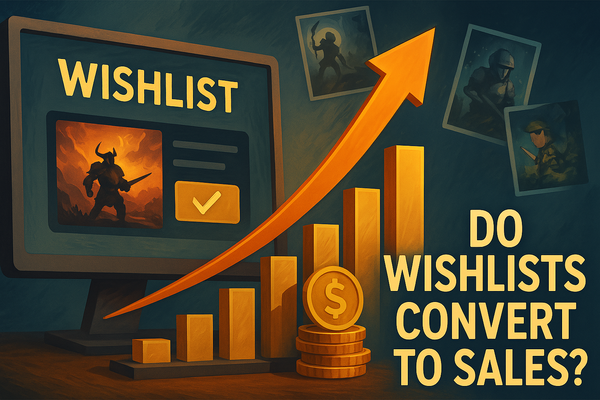Understanding Influencers By The Numbers And Statistics
Explore the essentials of influencer marketing for gaming publishers and indie developers. Learn about influencer tiers, pricing, and strategies to maximize game promotion and combat influencer fraud.

As a gaming publisher or indie developer, influencer marketing is an excellent way to market and promote your game. However, many brands are still unsure where to begin with influencer marketing. In fact, it is estimated that only one-third of brands have actually used influencer marketing.
If you decide to delve into influencer marketing, familiarize yourself with the statistics, costs, and results to set clear expectations and develop your strategy. In this article, we will define the different types of influencers, what they might charge, and the results they deliver.
Defining Influencer Tiers
Influencers fall into several categories, varying depending on their follower count. The standard categories are as follows:
- Nano Influencers: Less than 10,000 followers
- Micro Influencers: 10,000 to 50,000 followers
- Mid Influencers: 50,000 to 500,000 followers
- Macro Influencers: 500,000 to 1 million followers
- Mega Influencers: More than 1 million followers
Price Per Post
Understanding the potential charges of influencers at each tier is crucial. Although there are no fixed numbers, typical ranges include:
- Nano Influencers: $20 to $100 per post
- Micro Influencers: $35 to $450 per post
- Mid Influencers: $150 to $2,500 per post
- Macro Influencers: $250 to $7,000 per post
- Mega Influencers: $1,500 and above per post
Influencers might charge per post or offer packages for a series of posts. Also, their charges vary depending on how you engage with them.
Influencers' Size Per Platform
Each social media platform has a percentage of influencers categorized as nano, micro, mid, macro, and mega. Here is a breakdown for each platform:
TikTok:
- 5,000-10,000 followers: 1.47%
- 10,000-50,000 followers: 18.38%
- 50,000-100,000 followers: 30.88%
- 100,000-250,000 followers: 25.74%
- 250,000-1,000,000 followers: 16.91%
- Over 1,000,000 followers: 6.62%
YouTube:
- 5,000-10,000 subscribers: 15.38%
- 10,000-50,000 subscribers: 65.93%
- 50,000-100,000 subscribers: 6.59%
- 100,000-250,000 subscribers: 5.93%
- 250,000-1,000,000 subscribers: 4.40%
- Over 1,000,000 subscribers: 1.76%
Instagram:
- Less than 10,000 followers: 65.39%
- 10,000 - 50,000 followers: 27.73%
- 50,000 - 500,000 followers: 6.38%
- 500,000 - 1,000,000 followers: 0.28%
- Over 1,000,000 followers: 0.23%
Overall, the largest tier of influencers, regardless of platform, is the micro influencer tier, with 10,000 to 50,000 followers or subscribers. This is evident from the high percentages in this tier across TikTok (18.38%), YouTube (65.93%), and Instagram (27.73%), compared to the substantially lower percentages in the nano influencer tier.
Impact Of Influencers
An interesting aspect of influencers is that their impact often decreases as their follower count increases. Here are some statistics on the engagement rate for each platform based on the influencers' follower size:
TikTok:
- Nano Influencers: 18% engagement rate
- Micro Influencers: 12% engagement rate
- Macro Influencers: 8% engagement rate
- Mega Influencers: 4% engagement rate
YouTube:
- Nano Influencers: 3.5% engagement rate
- Micro Influencers: 3% engagement rate
- Macro Influencers: 2% engagement rate
- Mega Influencers: 1.5% engagement rate
Instagram:
- Nano Influencers: 5% engagement rate
- Micro Influencers: 3.5% engagement rate
- Macro Influencers: 2% engagement rate
- Mega Influencers: 1% engagement rate
The larger the following, the lower the engagement rate. This interesting phenomenon occurs due to a mix of factors: social media platforms' algorithms affecting an influencer's reach, and a more alarming issue - fraud.
Influencer Fraud Statistics
Influencer fraud often involves the use of fake accounts to inflate follower counts and engagement metrics like views, comments, likes, and shares. On average, the percentage of influencers who have committed fraud is:
- Nano Influencers: 32.43%
- Micro Influencers: 44.5%
- Mid Influencers: 51.24%
- Macro Influencers: 56.19%
- Mega Influencers: 59.72%
This suggests that working with larger influencers carries a higher risk of encountering fake followers, making nano influencers a safer choice.
Strategizing Your Influencer Marketing

Now, consider which type of influencer is the best fit for marketing your game. For example, you have two influencers to choose from:
- A micro-influencer with 10,000 followers charging $35 per post
- A macro-influencer with 500,000 followers charging $250 per post
On TikTok, with a 12% engagement rate, the micro-influencer will engage 1,200 people, while the macro-influencer, with an 8% engagement rate, will engage 40,000 people. However, a macro-influencer is more likely to have committed fraud than a micro or nano influencer. Therefore, their actual conversion rates might be lower due to inflated follower counts. So, which should you choose?
There are many routes to consider, but starting with micro-influencers can help establish a baseline and set expectations with minimal risks because they are less expensive to work with. Here, you can test the assets you provide to influencers and gain an understanding of who is engaging with your brand's content.
Once the baseline is established and expectations are set, you can move on to bigger influencers with a greater understanding of how your campaign should perform and what you need to provide the influencers for success.
Using Performance-Based Marketing To Fight Fraud
Performance-based influencer marketing with platforms like Glitch offers a promising solution to combat influencer fraud, a growing concern in the industry. Traditional influencer marketing approaches often rely on follower count as a metric for influencer selection and compensation, which can be misleading due to the prevalence of fake followers and artificially inflated engagement statistics. For instance, with reported influencer fraud rates ranging from 32.43% for nano influencers to 59.72% for mega influencers, there's a significant risk of brands investing in partnerships that do not reach genuine audiences.
Performance-based marketing counters this by tying compensation directly to tangible results that the gaming publisher sets, such as how many clicks or purchases of the game. This shift in focus encourages a more authentic and transparent relationship between brands and influencers, as influencers are incentivized to cultivate genuine engagement and deliver measurable results.
In this context, a hybrid model, blending traditional and performance-based approaches, can be particularly effective. It allows brands to minimize the risk associated with upfront payments while still acknowledging the influencer's effort in content creation. For example, a micro influencer with 10,000 followers, who might typically command a certain fee per post, would be compensated not just for the post itself but also for the actual engagement it generates. This approach ensures that the influencer's earnings are more reflective of their real influence and the quality of their audience engagement. It encourages influencers to maintain a genuine, engaged follower base and discourages the use of fraudulent tactics to boost perceived influence. This not only safeguards the brand's investment but also promotes a healthier, more authentic influencer marketing ecosystem.




